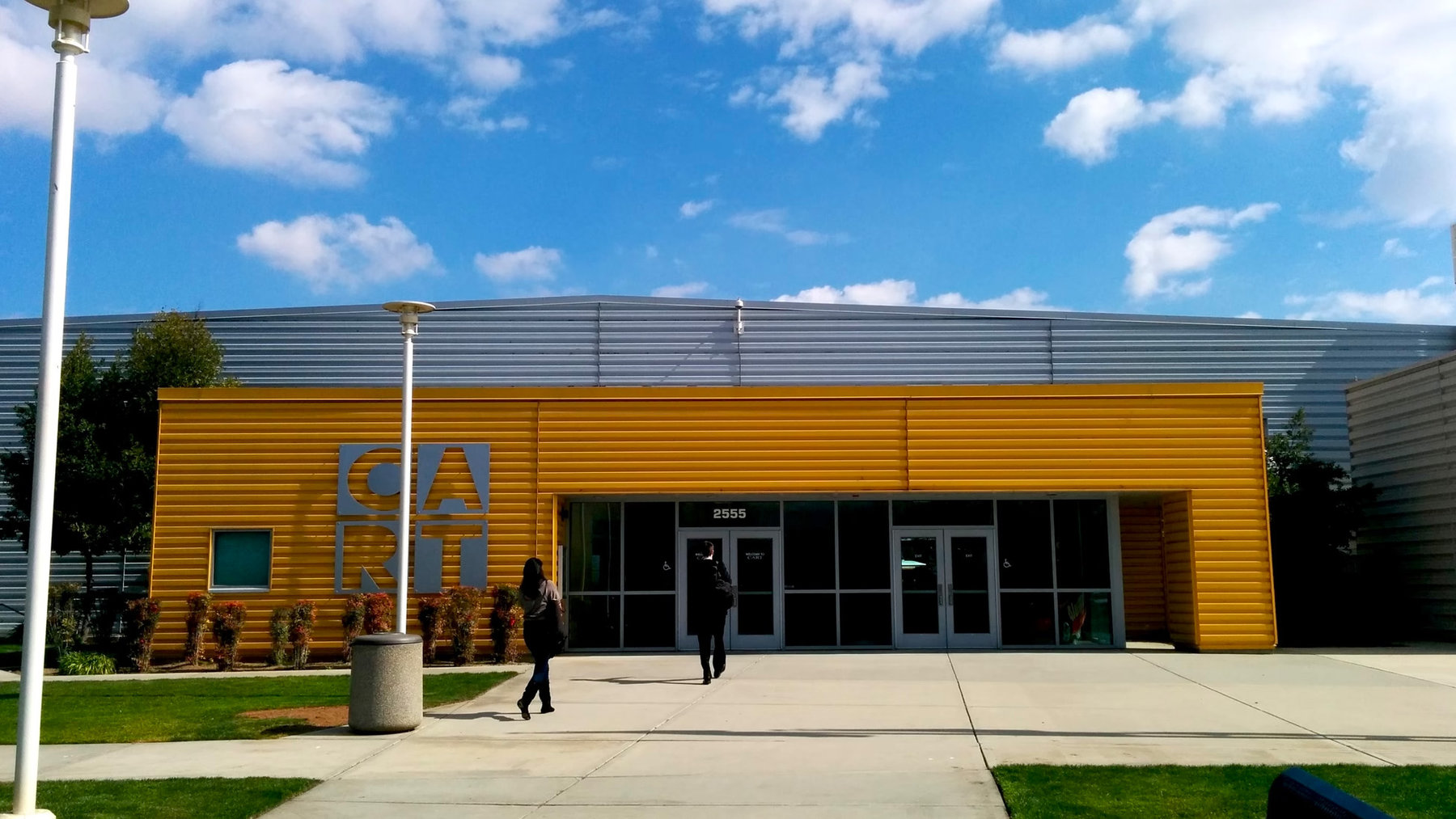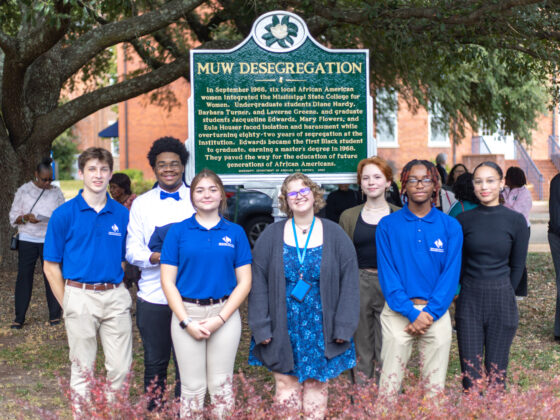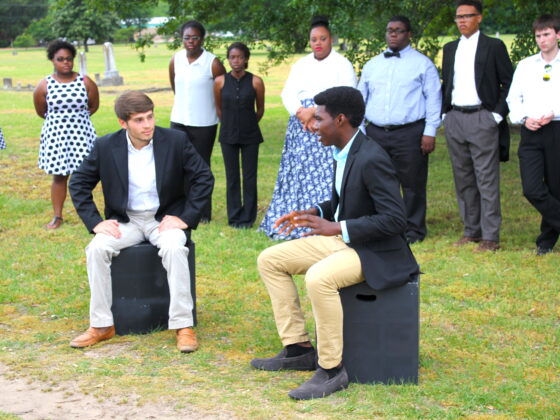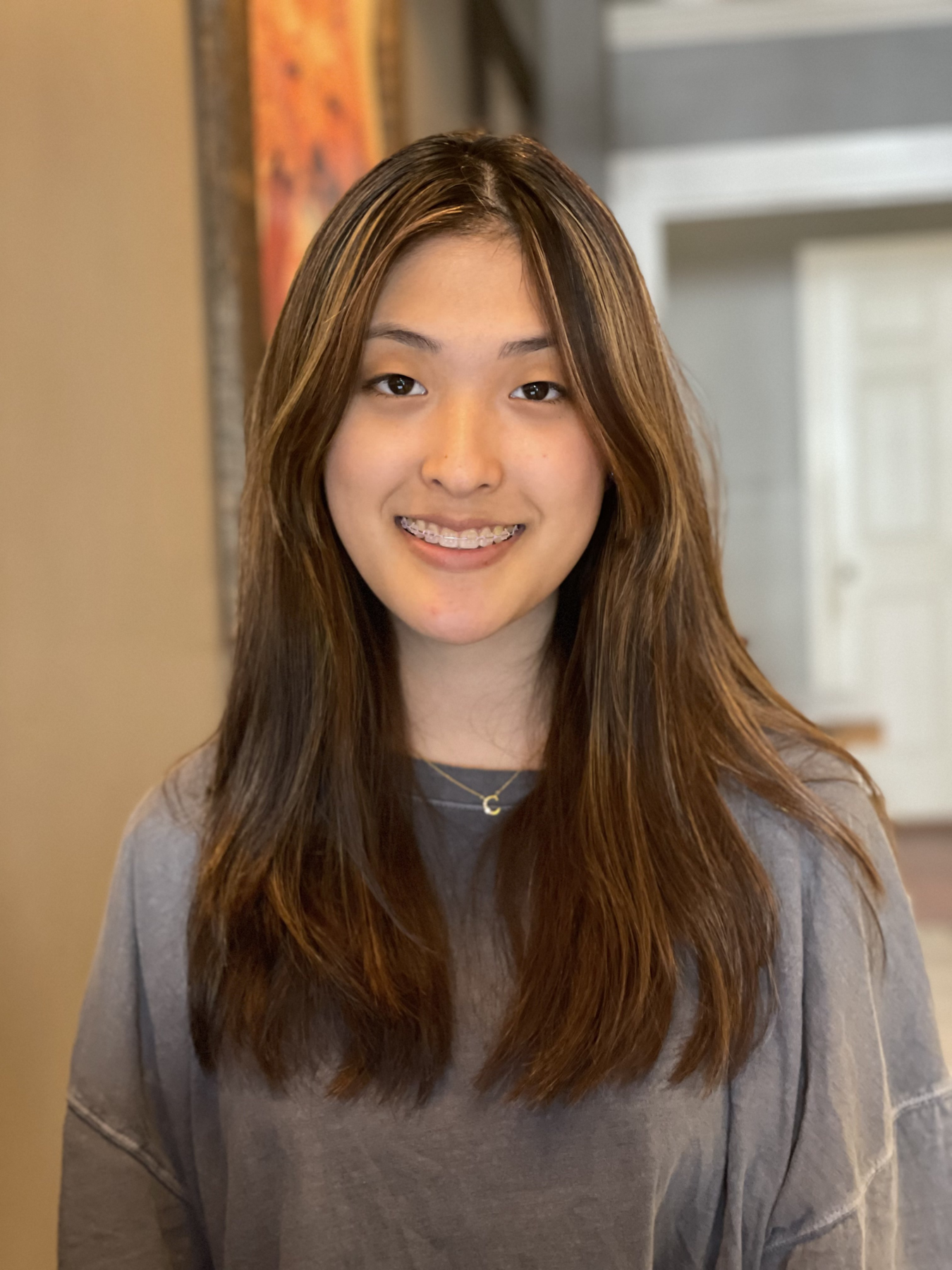CART draws about two-thirds of its students from the city of Fresno, whose overall challenges Jim described yesterday. The other third are from the much smaller and more affluent town of Clovis, which abuts the northeast section of Fresno. Rick Watson, who is CART’s CEO rather than its principal, said that in 1997 a group of educators, business people, and community leaders of Fresno pulled together in a feat of creativity and cooperation to imagine and build a rigorous career-track high school with a solid academic footing, an infusion of technology, and a spirit of real-worldism.
 Inside a CART robotics lab
Inside a CART robotics labCART students choose among 16 different career tracks, many more than we have seen offered in any other school, from forensics to game design to law and order, robotics, biotech, engineering, business and finance, environmental science, psychology and human behavior, and many more. Each track, or “lab” as they are called at CART, is taught by a team of three educators, who have a range of work experience in their fields, from TV to graphic design, to pharmaceuticals and more.
Subjects like English, science, and math are folded into students’ CART curriculum, which is largely designed around teams doing industry-based projects. I heard about cloning carrots, making movies, designing online games, and making toys. There are field trips to world agriculture expos, aviation companies, and dairies. Students do internships or projects that take them to hospital operating rooms, senior centers, and wildlife refuges. You can catch a lot of CART’s spirit from its Facebook page.
From the beginning, the real world of Fresno businesses have stepped into the lives of CART students. A long list of big names have helped CART from the beginning.
One that caught my eye is the Haworth furniture company of Holland, Michigan, which was an early donor of furniture to CART. We visited early in our American Futures journey, and which Jim wrote about here. It’s nice to see American Futures coming full circle!
 The open gathering space at CART
The open gathering space at CARTAnother full-circle moment reflects how local institutions are pulling together (a favorite American Futures theme) to build a new Fresno. CART and the young, leading-edge tech incubator Bitwise, which Jim introduced here and will say more about soon, are partnering. CART students in the Web Design lab will work onsite at the programming-training Geekwise Academy inside Bitwise, taught by a pairing of a CART English teacher and a Bitwise professional web developer. And for real-world projects, students will also have a chance to work with the 40-some hot new tech companies located at Bitwise.
 Banners in CART halls
Banners in CART hallsCART’s home is a renovated airy, open former factory of the Danish water pump manufacturer Grundfos, whose U.S. birthplace was Fresno, in California’s agricultural heartland. The broad halls, big staircase, two-storied common space, and big-windowed classrooms create a space where kids can move freely and loosely. Banners of heros and inspiration decorate the halls: Eleanor Roosevelt, Bill Gates, George Lucas, John Glenn, among others.
I toured the school with Harut Bareian, one of CART’s enthusiastic student ambassadors who guide the many visitors through the CART experience. Harut is Armenian, part of a large immigrant population originally attracted to Fresno’s farming opportunities in the late 19th century. His home school is the Bullard High School in Fresno. He is in the biomedical track, and hopes to become a pharmacist. Like many CART students, Harut has laid out his plan to attend community college for a few years before transferring to a four year college. He dreams of becoming a pharmacist.
CART’s hallmark career-track program is paired with a mission that CEO Rick Watson considers at least equally important: to develop the students’ “soft skills” of confidence, self-esteem, and teamwork. There is nothing soft about CART’s approach to soft skills. They use terms like “take risks,” “encouraged to fail,” “get back on the horse,” and “no one is expendable.” In the team-based projects, a student who lets down badly can find himself demoted from responsibilities or even off the team.
While touring the school with Harut, I noticed a group of about 10 people sitting around a table in the hall. I assumed they were visitors like me, who had also come to see the school. Wrong. This was a group of students from the multimedia track, dressed for professional-dress day, meeting side by side with their equally young-looking teachers and mentors. Can you tell who’s who in this photo?
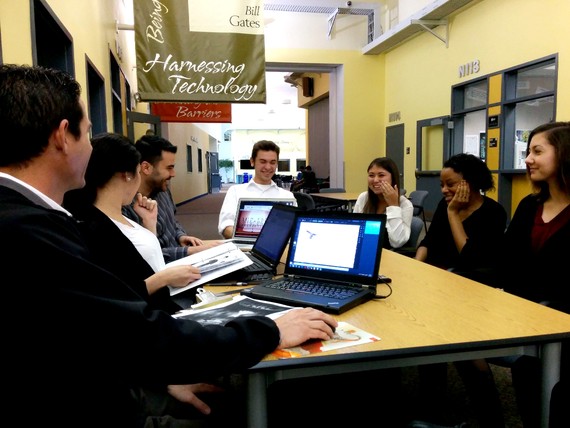 Multimedia team checking on video progress with their teachers
Multimedia team checking on video progress with their teachersI sat with the group while the students talked through progress on their 10-week-long project, the production of a seven-minute video. This year’s theme for the video teams is science fiction. The essential question of their assignment: “How do imagination and technology contribute to our understanding of science, nature, and the human mind? How does the exploration of science and nature encourage us to dream of a better future”?
The soup-to-nuts tasks include writing an original story and script, casting actors, directing, filming, effects, editing, promotion, and presentation. The final package includes a reality-documentary of the entire video production, with its many high points and low points.
A few nights ago, Jim and I watched about half of last year’s 22 productions on DVD. The most remarkable part to us were the student-produced documentaries which accompanied each film. The students spoke about how doing this intense work taught them about frustrations, perseverance, teamwork, satisfactions, and a lot of other things we would all like high schoolers to experience.
Using 7 years of data, from graduating classes of 2003 to 2009, CART students were enrolling in community colleges at significantly higher rates, 71 percent versus 60 percent, than demographically-matched non-CART students. Also, enrollment percentages in universities were slightly higher for CART students: 23 percent versus 21 percent.
Another softer measure I found more meaningful—words straight from the students themselves. These words are from a CART graduate of 2014, a young woman who studied in the Economics and Finance track. Here is an excerpt from a blog post she entered on the CART website, which can be found in its entirety here.
Graduation is coming up in a few short weeks, and I can’t believe that I’m about to be done with high school. In fact, it’s hard to believe that I survived these past four years. I think I only survived these last two years because of CART.
Attending CART is one of the best decisions that I have made in my life. While at CART, I have been challenged and pushed to become good in what I aim to do. I have struggled and stressed through projects, but reflecting back I can honestly say that I have enjoyed all of it, even if I didn’t believe it at the time.
This is my second year as a student in the Economics and Finance Lab. This lab and the teachers in it have helped me in more ways than I can count. I feel that I have gained so much knowledge in the business world that I am ready to be a part of it. During these two years, I have put together financial portfolios, gone on two internships, created a non-profit and am currently creating a for-profit business. None of these are things I would be able to do, especially not with such skill and precision like I have been able to, if not for CART. My teachers and this learning environment have provided me with plenty of real world experience that I feel I can jump into the business field now and survive.

